Aged Care Interior Design: Creating Comfortable, Dementia-Friendly Spaces
What makes a space feel like home? Is it the cosy furniture, the warm colours, or the way it makes you feel safe and cared for?
When it comes to aged care facilities, getting this atmosphere right is absolutely essential. Aged care interior design goes beyond just looking nice; it’s about crafting spaces that support well-being, safety, and dignity for residents, particularly those living with dementia.
Here’s how thoughtful design can create inclusive, comfortable, and dementia-friendly interior design solutions for aged care environments.
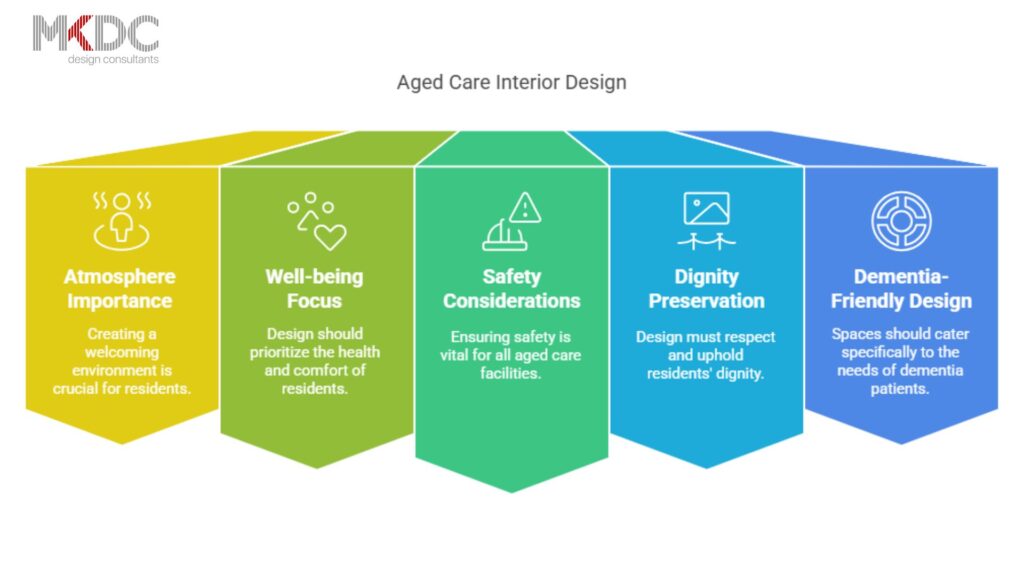
Why Design Matters in Aged Care
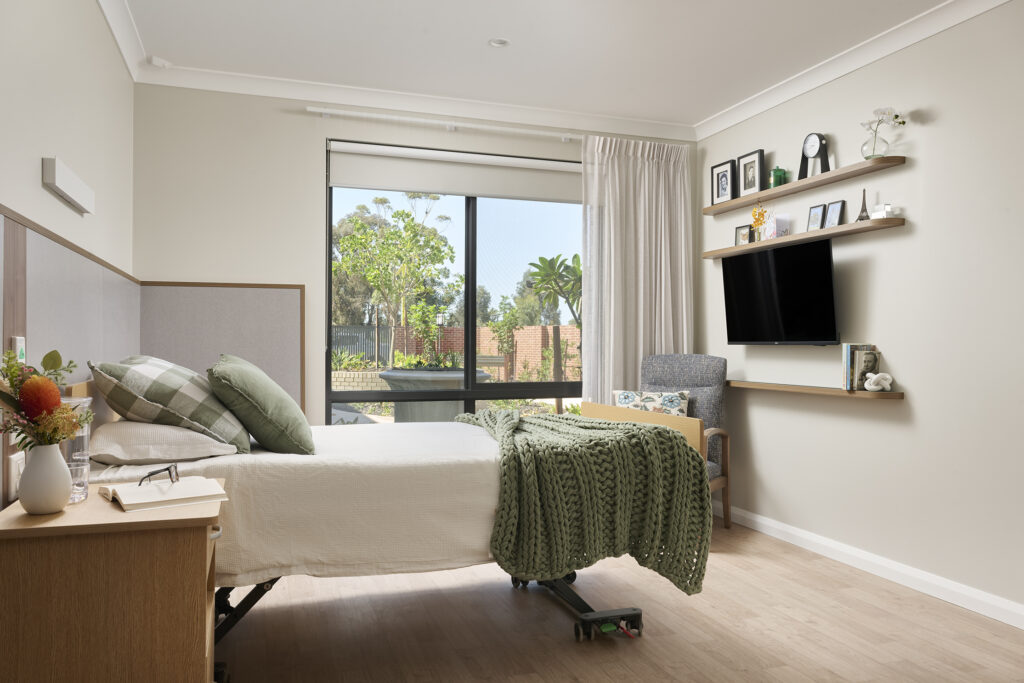
The way a space is designed can significantly impact how people feel, move, and interact with their surroundings. For residents in aged care facilities, good design isn’t just a luxury—it’s a necessity. Thoughtful aged care interior design can foster independence, encourage social connections, and reduce anxiety, particularly for those with dementia.
Imagine entering a space where everything feels intuitive—clear paths, calming colours, and spaces that make you feel safe. That’s the goal of inclusive interior design in aged care.
Understanding the Needs of Residents
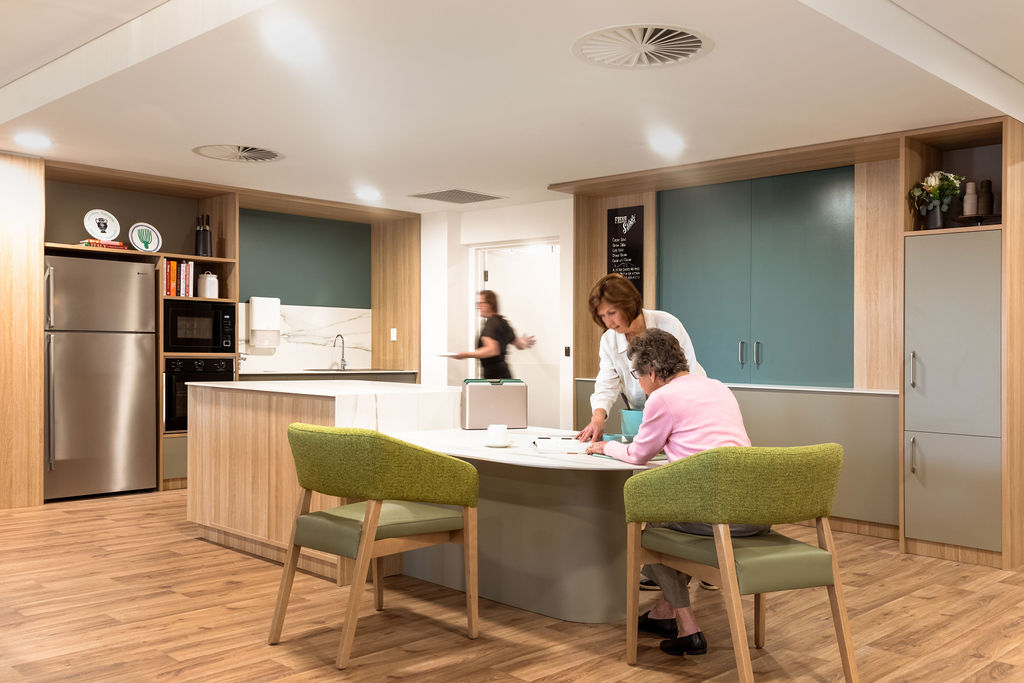
When designing aged care spaces, it’s crucial to consider the unique needs of residents. Many are dealing with mobility issues, memory loss, or sensory challenges. A well-designed environment can alleviate some of these challenges by making everyday activities simpler and safer.
For those with dementia, dementia-friendly interior design principles are key. These principles focus on creating environments that reduce confusion and promote a sense of calm. For example:
-
- Clear wayfinding signs.
-
- Avoiding overstimulating patterns.
-
- Using familiar layouts to create a sense of security.
Designing for Comfort
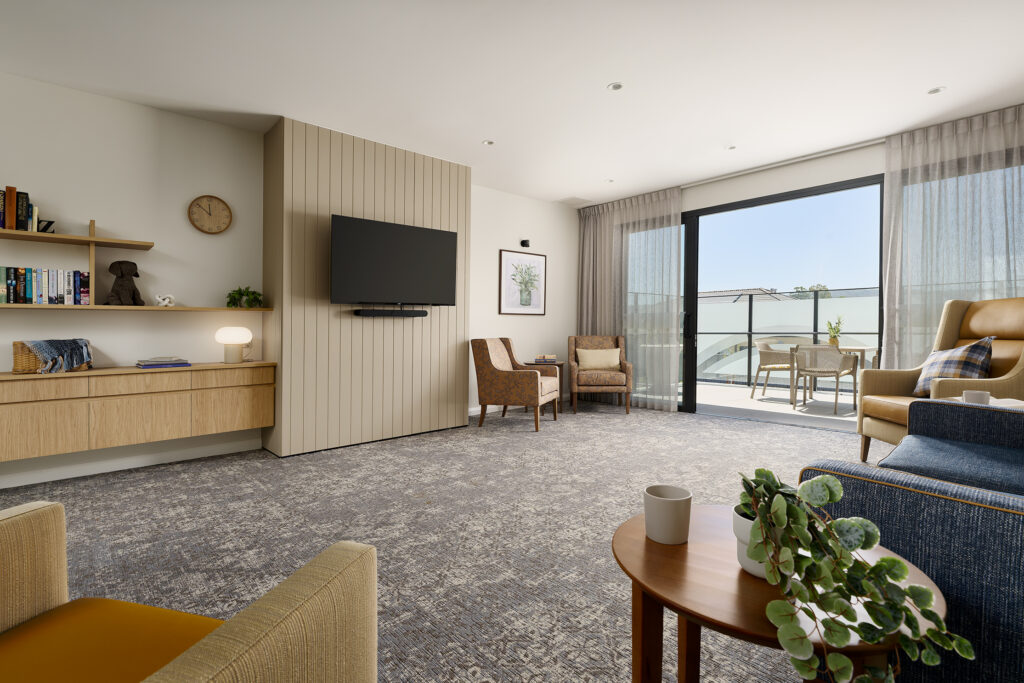
Comfort should be the foundation of aged care interior design. These spaces should feel warm, inviting, and homely. Here’s how to achieve that:
Furniture that Invites Relaxation
Choose furniture that’s not just functional but also practical & comfortable. Armchairs that are easy for mobility impairment and beds with adjustable features are great options. Rounded edges and easy-to-clean materials add safety and practicality.
Colours That Calm
A soothing colour palette can make a big difference. Think soft blues, greens, and earthy tones that create a relaxing atmosphere and reduce stress. For dementia-friendly interior design, contrasting colours are essential and can also help residents easily identify key areas.
Personalisation is Key
Allow residents to bring personal items into their rooms. Familiar photos, blankets, or knick-knacks help make the space truly feel like home. Inclusive interior design means recognising that no two residents are the same, and their spaces can be personalised to reflect that.
Dementia-Friendly Interior Design Principles
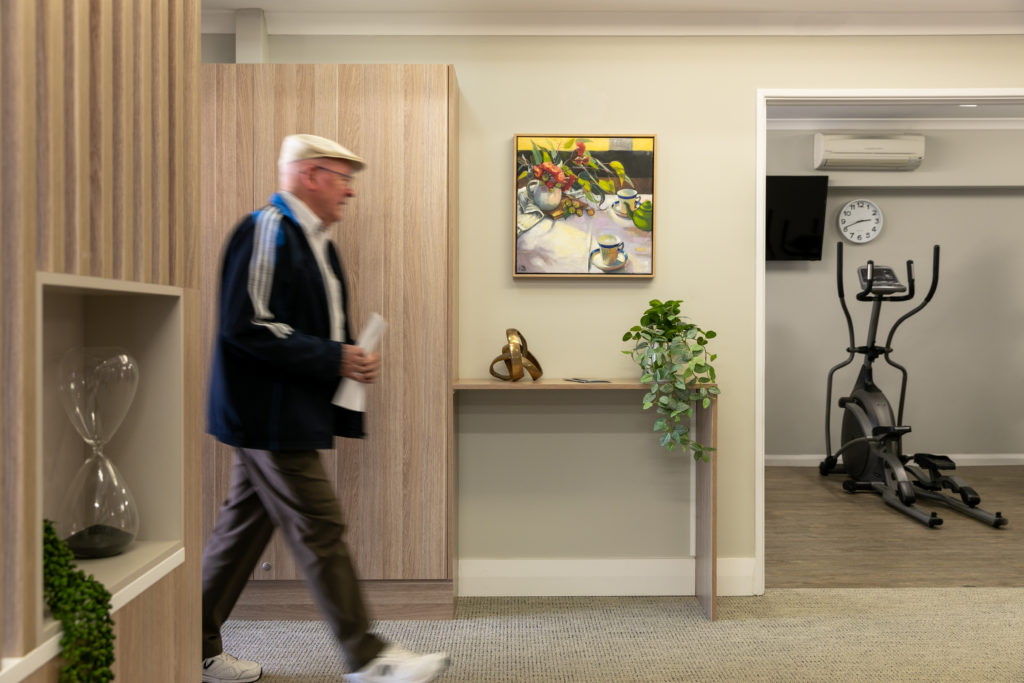
Designing for residents with dementia requires careful planning to ensure their environment is supportive and intuitive. Here are some key principles of dementia-friendly interior design:
Clear Wayfinding
Clear, readable signage is crucial. Use large, simple fonts and incorporate visual cues like symbols or colours to help residents navigate.
Safe and Clutter-Free Spaces
Non-slip flooring and wide, unobstructed pathways are essential. Keep spaces free from clutter to minimise tripping hazards and confusion.
Memory Cues and Familiarity
Incorporate design elements that spark recognition, such as furniture, familiar layouts, or even familiar smells through scented plants. These small touches can help residents feel more grounded and reduce anxiety.
Dementia Loops and Access to the Outdoors
Provide external accessible gardens with shade, seating, and safe pathways so residents are able to enjoy the outdoors.
The Role of Nature in Aged Care Design
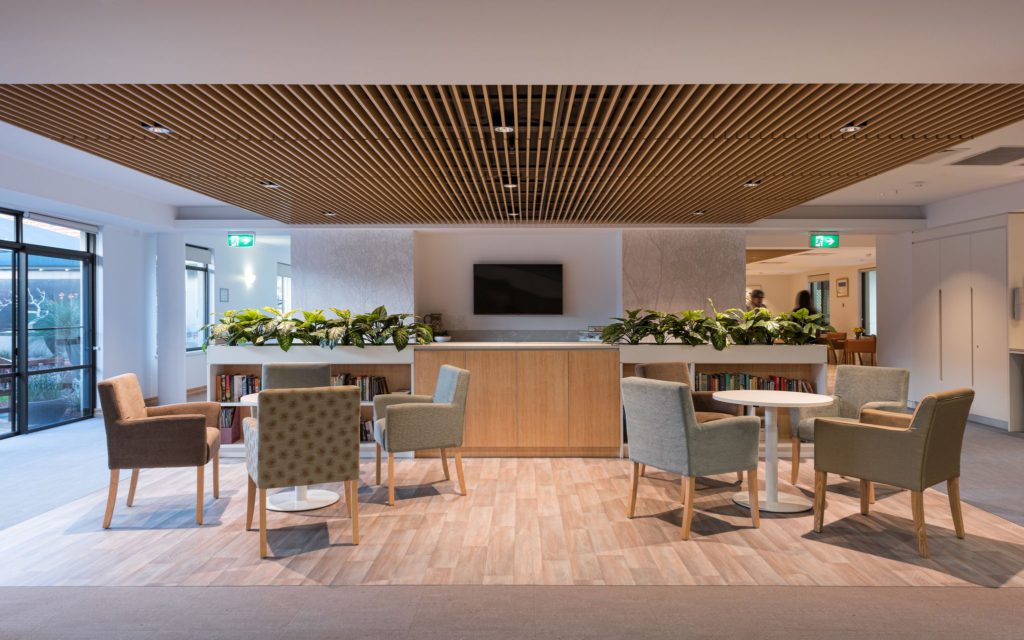
Nature has a calming and restorative effect, and incorporating biophilic elements is a cornerstone of aged care interior design. From lush indoor plants to thoughtfully designed gardens.
Natural Light
Large windows provide spaces with natural light, reducing the need for harsh artificial lighting. This is especially helpful in supporting circadian rhythms.
Garden Spaces
Outdoor areas with walking paths, shaded seating, and sensory plants can encourage residents to spend time outdoors. For inclusive interior design, ensure these areas are accessible to those with mobility aids.
Creating Social Spaces
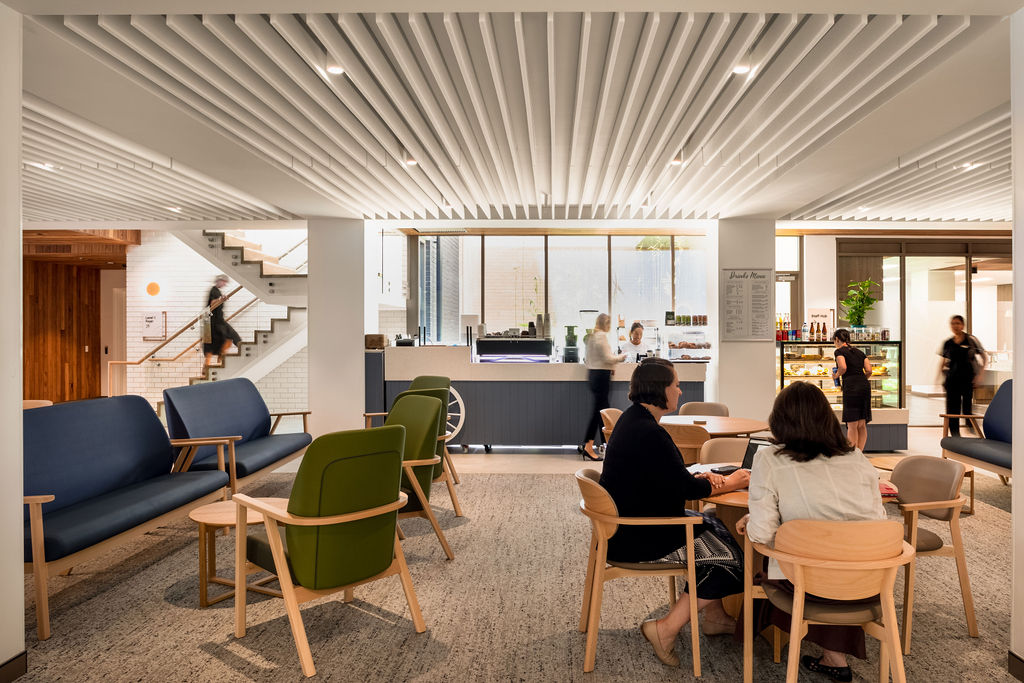
Aged care facilities aren’t just about private rooms—they’re also about fostering community. Shared spaces play a huge role in inclusive interior design, providing residents with areas to socialise, dine, and participate in activities.
Shared Dining Areas
Communal dining rooms encourage residents to interact during meals. Use round tables to facilitate conversation and opt for soft, ambient lighting to create a welcoming atmosphere. A family dining room style can lift spirits and break down the sense of institutional life.
Activity Rooms
Spaces for games, arts, or group activities should be bright, cheerful, and flexible. Make sure furniture can be rearranged easily to suit different activities.
Private Retreats
While social spaces are important, quiet corners or private lounges are just as vital. These spaces allow residents to recharge in peace.
Technology and Innovation in Aged Care Design
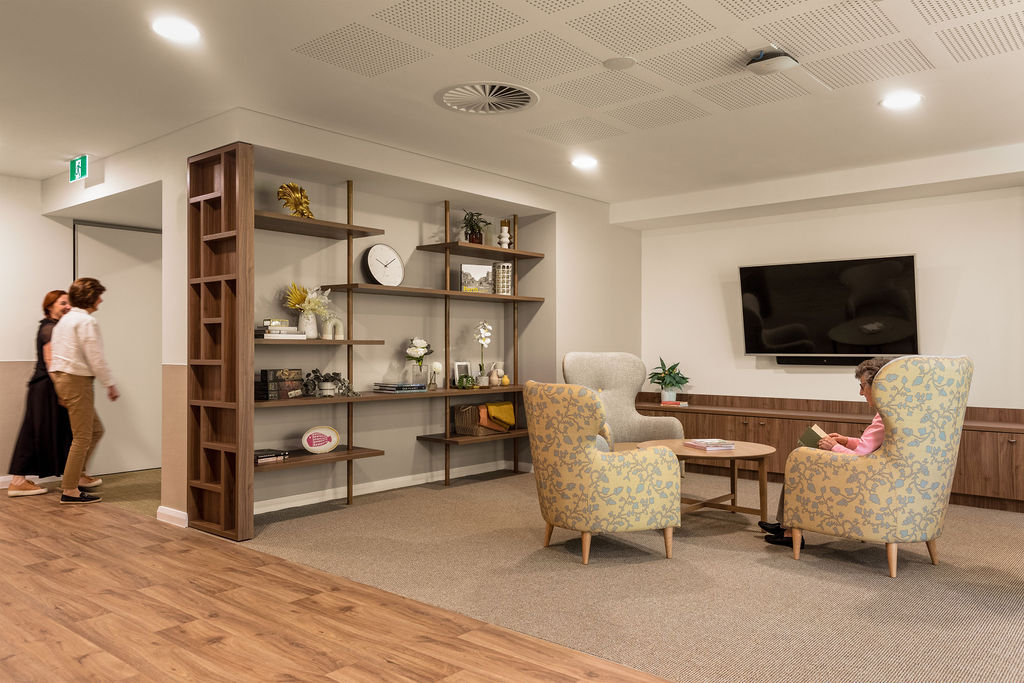
Technology can enhance aged care interior design, but it should never overwhelm the space. Instead, tech should quietly support residents’ needs.
Safety Features
Sensor lighting can illuminate pathways when residents get up at night, reducing fall risks. Similarly, automated climate control can ensure rooms remain comfortable without manual adjustments.
Digital Wayfinding
For dementia-friendly interior design, digital tools like interactive touchscreens can assist residents in finding their way around the facility.
Overcoming Design Challenges
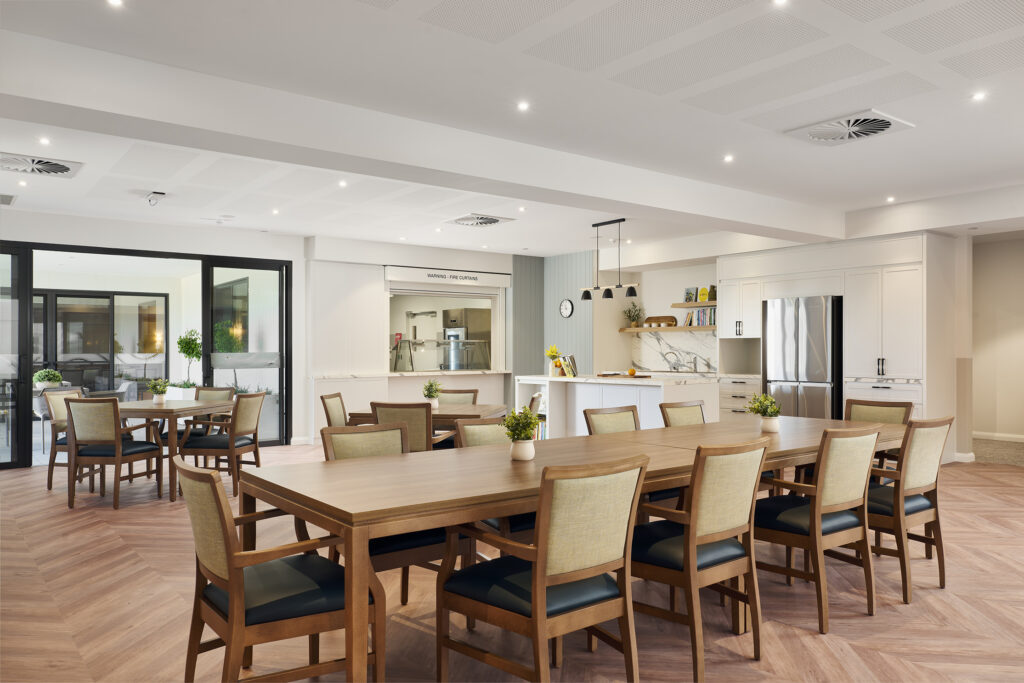
Designing aged care spaces comes with its own set of challenges. Here are some practical tips for creating impactful spaces:
-
- Opt for durable, timeless materials that can withstand heavy use.
-
- Prioritise safety features without making the space feel clinical.
-
- Engage residents, families, and staff for feedback to ensure the design meets everyone’s needs.
At its core, aged care interior design is about creating spaces that feel like home—spaces that support independence, foster well-being, and respect the dignity of every resident.
Whether it’s incorporating nature, creating dementia-friendly layouts, or designing spaces for social connection, thoughtful design can truly transform aged care facilities. By focusing on comfort, safety, and inclusivity, we can craft environments where residents feel cared for and valued.
At MKDC, we specialise in creating thoughtful and innovative interiors for aged care facilities. With a deep understanding of inclusive interior design and expertise in dementia-friendly interior design, MKDC ensures every detail is tailored to meet the unique needs of residents.
From incorporating calming colour palettes to designing safe and functional communal areas, MKDC’s designs foster comfort and dignity.
Ready to enhance your aged care facility? Contact MKDC to bring your vision to life with interiors that truly make a difference.